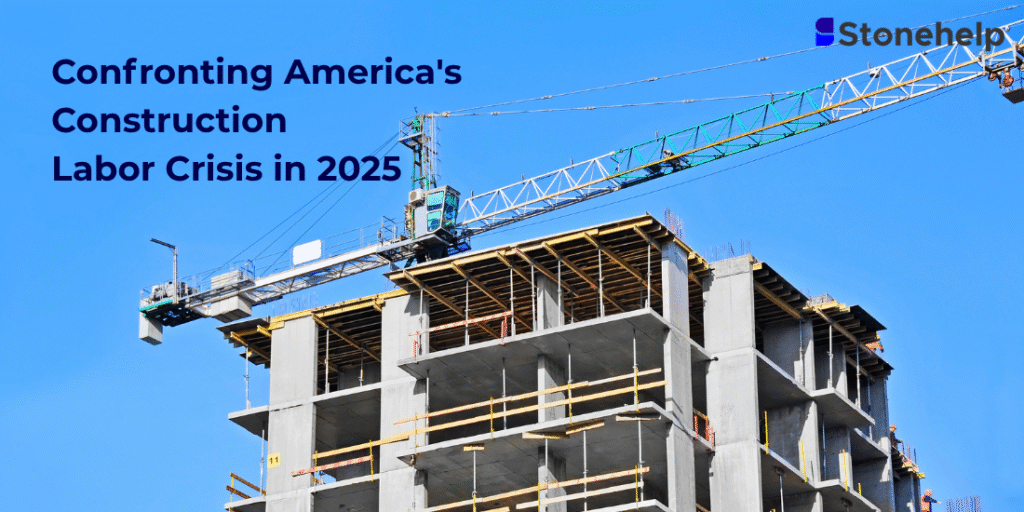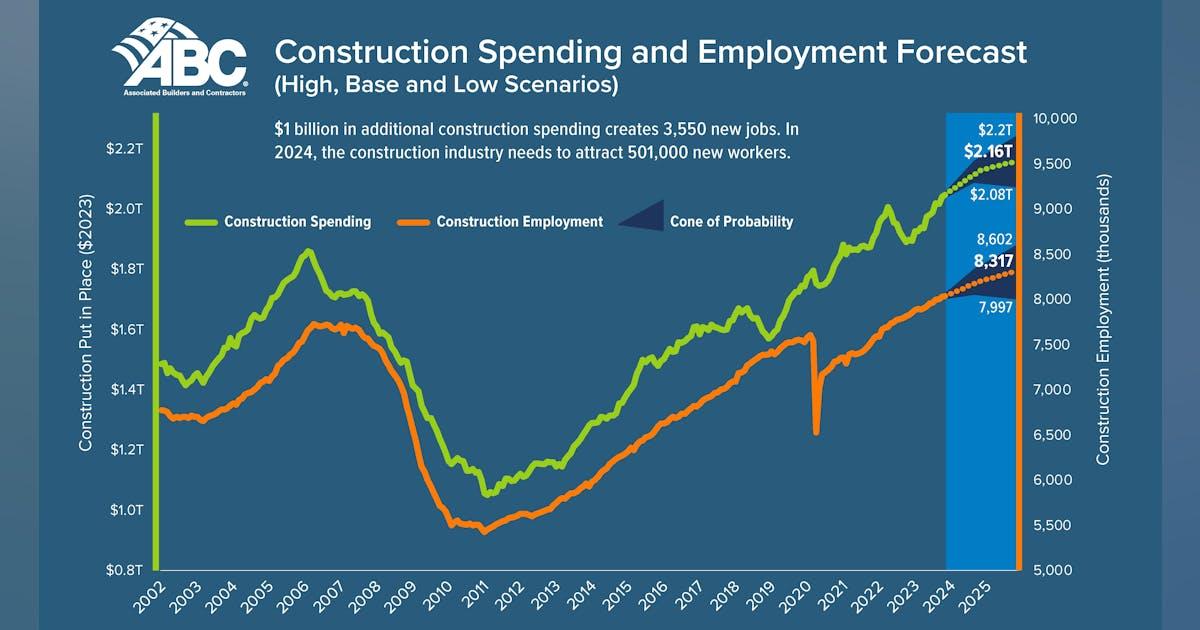
In 2025, as the United States contends with aging infrastructure, housing shortages, and a surge in federally funded construction projects, the industry faces a critical question: Who will do the building?
The workforce crisis in American construction is both a looming threat and a full-blown emergency. From highways to hospitals, and from schools to solar farms, project timelines are being squeezed and costs are rising, not because materials are unavailable, but because skilled workers are. The 2024 and 2025 Workforce Survey from the Associated General Contractors of America (AGC) paints a stark picture of labor pressures in the industry. Although the survey provides an essential pulse-check on hiring challenges, the broader economic and social trends reveal that the American construction workforce is contending with structural, generational, and policy-level crises that no single program or pay raise can resolve alone.

Source: Contractor mag construction data
The Survey That Sounded the Alarm
The AGC’s 2024 and 2025 Workforce Survey, conducted with responses from over 1,400 and ~1100 (respectively) general and specialty contractors across the U.S., highlights the severity and scale of workforce challenges:

The findings highlight a familiar yet escalating problem: nearly nine in ten construction companies struggle to find the workers they need, and the pipeline for new talent remains worryingly thin.

Beyond the Numbers: The Workforce Crisis in 2025
The problem is not just about filling vacancies. The construction sector in 2025 is more complex than ever, shaped by global economic shifts, rapid technological advancements, and the demographic tide of retiring baby boomers. At the heart of the crisis lies a severe shortage of qualified tradespeople. Carpenters, electricians, welders, heavy equipment operators: all these are the very hands that built America, yet the younger generation is largely absent from their ranks. Decades of cultural bias against vocational training, coupled with inconsistent investment in apprenticeships and trade education, have eroded the talent pipeline.
Furthermore, salaried roles such as estimators, supervisors, and project managers are also proving difficult to fill. As the industry leans into digital tools such as Building Information Modeling (BIM), modular construction, and AI-assisted design, new competencies are required to blend technical fluency with in-depth knowledge of construction. Unfortunately, the people who fit that profile are few and far between.
The industry is also grappling with the physical and reputational demands of the work. Construction remains physically strenuous, weather-exposed, and often perceived as dangerous. Many younger workers are opting for tech-based or remote opportunities over field-based work, particularly in a post-COVID world where flexible work expectations have expanded.
Finally, uncertainties in immigration and labour policies have further narrowed the labour pool. Strict visa restrictions, fluctuating enforcement, and a lack of coherent policy around foreign skilled workers have made it difficult for the industry to supplement domestic shortages with international talent. For some states, particularly in the South and West, these constraints are particularly acute.
The cost of inaction
Workforce shortages are causing:
- Project delays that ripple into public services, commercial openings, and housing supply
- Budget overruns occur as firms rely on overtime, subcontractors, or imported labor
- Lost revenue opportunities from contracts that companies can’t bid on or complete
- Inflationary pressure in key sectors such as housing and energy infrastructure
These impacts are occurring as the U.S. embarks on its most ambitious infrastructure agenda in decades, including trillions of dollars in investments under the Bipartisan Infrastructure Law, the CHIPS and Science Act, and the Inflation Reduction Act. But without a ready workforce, these dollars risk becoming stranded capital.
Building the builders
Addressing the workforce crisis requires a multi-pronged, collaborative response that tackles root causes, not just symptoms. Solutions must be strategic, long-term, and inclusive of educators, policymakers, employers, and communities.
One clear priority is to reposition construction as a modern, rewarding, and high-tech career path. A viable approach could include revamping public perceptions through national awareness campaigns, integrating trade education into high school curricula, and empowering guidance counselors to steer students toward skilled trades with the same enthusiasm they show for four-year degrees.
At the same time, training and workforce development must become more agile and employer-aligned. Community colleges, vocational institutes, and labor unions require modernized curricula that keep pace with technological advancements in construction, such as off-site fabrication, robotics, and digital twins. Hands-on apprenticeship programs should be expanded, and incentives provided to firms that mentor and certify new workers on the job.
Workforce solutions must also center inclusion and accessibility. Women, veterans, formerly incarcerated individuals, and immigrants represent untapped reservoirs of talent and potential. Programs that provide wraparound services, such as childcare, transportation, and mentorship, can help these workers thrive in the field. Moreover, policies that support legal pathways for skilled foreign labor can offer short- and medium-term relief.
Employers, meanwhile, must continue to innovate in retention as much as in recruitment. This means investing in safety, mental wellness, career progression, and work-life balance. As younger generations seek purpose, flexibility, and growth in their careers, the construction industry must evolve its culture to stay competitive.
Ultimately, government agencies must streamline their regulatory compliance processes. The AGC survey highlights how federal red tape, particularly vague guidance, hinders hiring and delays project starts. A collaborative and consistent regulatory framework would enable firms to navigate rules efficiently, freeing resources for hiring and training.
A future worth building
The state of America’s construction workforce in 2025 is as much a warning as it is a call to action. If stakeholders get it right, the payoff is enormous: a revitalized workforce, thriving local economies, and a nation better equipped to meet its infrastructural, environmental, and economic ambitions. In many ways, solving the construction workforce crisis is a national imperative. Because, without builders, the future cannot be built.